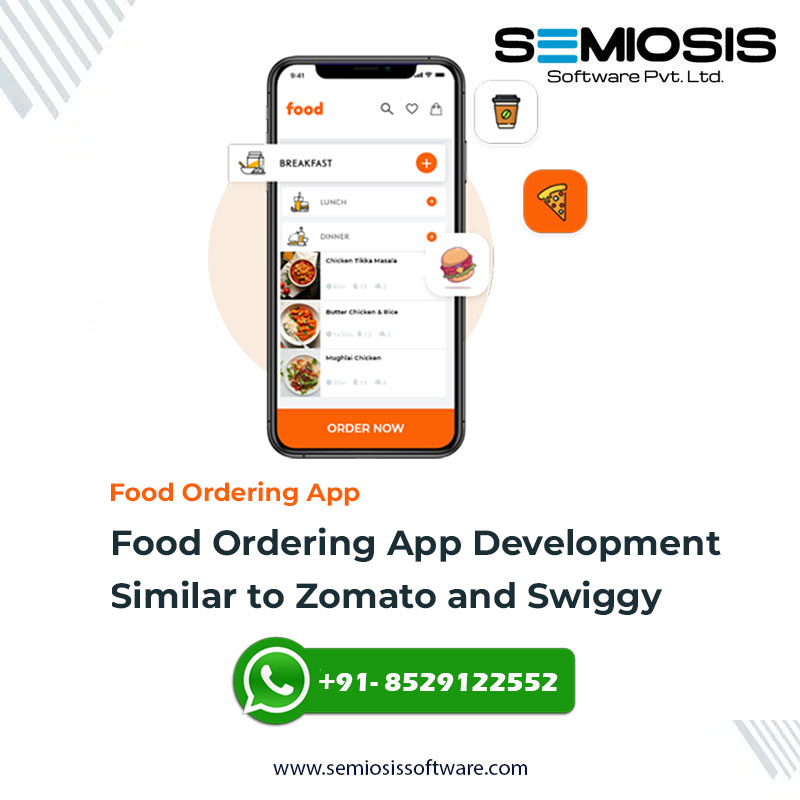Revolutionizing the Culinary Experience: The Journey of Food Ordering App Development Similar to Zomato and Swiggy
In the fast-paced world we live in, convenience has become the mantra for many aspects of our lives, including the way we enjoy our meals. The emergence of food delivery apps like Zomato and Swiggy has transformed the dining experience, offering users the luxury of enjoying their favorite cuisines from the comfort of their homes. In this blog, we’ll explore the key features, challenges, and the development process involved in creating a food ordering app similar to Zomato and Swiggy.
Understanding the Market:
Before diving into the development process, it’s crucial to conduct thorough market research. Analyzing user preferences, geographical locations, and existing competitors can provide valuable insights. This knowledge will guide developers in creating a unique value proposition that sets their app apart from the rest.
Key Features of Food Ordering Apps:
-
User-Friendly Interface:
- A simple and intuitive design ensures seamless navigation for users.
- Easy registration and login options, including social media integration.
-
Restaurant Listings:
- A comprehensive database of restaurants, categorized by cuisine, location, and popularity.
- Detailed restaurant profiles with menus, reviews, and ratings.
-
Search and Filters:
- Robust search functionality for users to find specific dishes, restaurants, or cuisines.
- Filters based on price, ratings, and delivery time.
-
Order Placement:
- A straightforward and secure order placement system.
- Integration of multiple payment options, including credit/debit cards, digital wallets, and COD.
-
Real-Time Tracking:
- Live tracking of the order from the restaurant to the user’s doorstep.
- Push notifications for order status updates.
-
Reviews and Ratings:
- Allow users to rate and review their orders, enhancing transparency and trust.
- Provide an opportunity for restaurants to respond to reviews.
-
Promotions and Discounts:
- Implement a loyalty program and promotional campaigns to retain users.
- Integrate discount codes and referral programs to attract new customers.
-
Multi-Language and Multi-Currency Support:
- Cater to a diverse user base by offering language options and supporting various currencies.
Challenges in Food Ordering App Development:
-
Regulatory Compliance:
- Adhering to local regulations related to food safety, hygiene, and delivery services.
-
Integration with Restaurants:
- Establishing partnerships with restaurants and ensuring smooth integration of their menus and inventory.
-
Logistics and Delivery Management:
- Developing an efficient logistics system for timely and accurate deliveries.
-
Data Security:
- Implementing robust security measures to protect user data, especially payment information.
-
Scalability:
- Designing the app to handle increased traffic and orders as it gains popularity.
Development Process:
-
Planning:
- Define the app’s objectives, target audience, and unique selling points.
- Create a detailed project plan, including features, timeline, and budget.
-
Design:
- Develop wireframes and prototypes for the app’s user interface.
- Ensure a responsive design for both mobile and web platforms.
-
Development:
- Choose the appropriate technology stack for the app.
- Focus on backend development, API integration, and database management.
-
Testing:
- Conduct rigorous testing to identify and fix bugs.
- Perform user acceptance testing (UAT) to ensure a seamless user experience.
-
Deployment:
- Launch the app on app stores and other relevant platforms.
- Monitor its performance and address any post-launch issues promptly.
Conclusion:
Creating a food ordering app like Zomato and Swiggy involves a multifaceted approach, combining innovative features, a user-friendly interface, and robust backend infrastructure. As the food delivery market continues to grow, developing an app that stands out in terms of reliability, efficiency, and customer satisfaction will be key to success. With the right strategy and execution, your food ordering app has the potential to revolutionize the way people experience and enjoy their meals.






